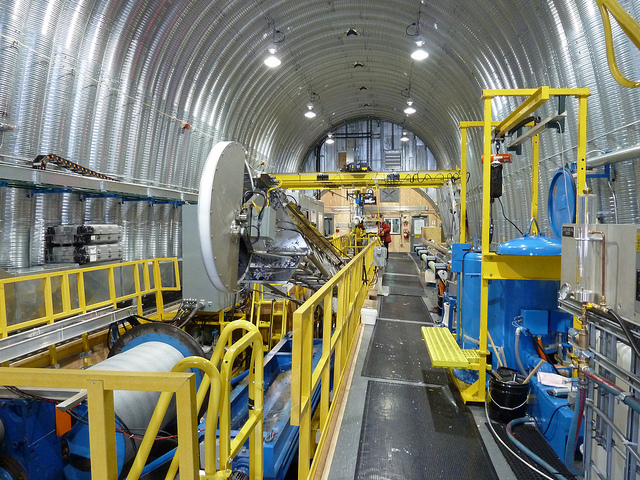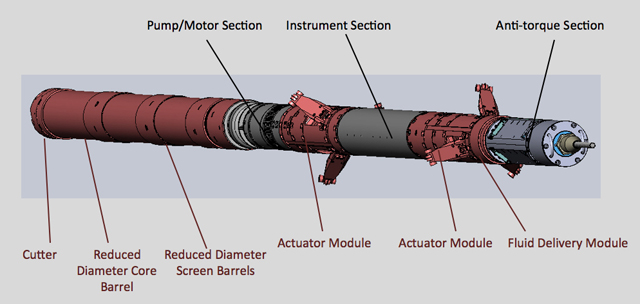Repeat experimentNew replicate ice core system will target abrupt climate change eventsPosted June 29, 2012
Scientists have been extracting ice cores from Antarctica for the better part of 50 years. But no one has tried to do what a team of researchers and engineers propose at the end of this year from a field camp in one of the snowiest regions of the West Antarctic Ice Sheet (WAIS). “No one in the world has developed a system to replicate ice cores at any chosen depth and at any chosen azimuth within an existing borehole,” said Alex Shturmakov, director of engineering and research for Ice Drilling Design and Operations (IDDO) The multiyear WAIS Divide project The ice core represents a window back in time on the Earth’s climate. Scientists can analyze bubbles of various gases trapped in the ice — particularly the important greenhouse gas carbon dioxide — to get a sample of the ancient atmosphere. Dust and chemicals found in the ice can also provide details about past climate. But what makes the WAIS Divide ice core particularly special is the same thing that makes it an extremely difficult place to reach and work — tons of snow. That gives researchers fat annual layers of accumulation, which translates into a high-resolution paleoclimate record for the last 62,000 years. “Abrupt climate change is a major focus of this ice-coring effort, and so we’re going to be looking in great detail at one or two of the abrupt climate-change events,” said Jeffrey Severinghaus It took about five years for drillers to punch through nearly the entire ice sheet, recovering a single sliver of Antarctic ice. That very finite supply is coveted by many researchers, who eventually must destroy their samples to conduct various analyses. That’s where replicate coring Engineers at IDDO, which designed and built the Deep Ice Sheet Coring (DISC) Drill “Basically, it transforms the DISC drill into replicate coring system through the inclusion of several new components,” explained Shturmakov, the project manager for both the DISC drill and replicate coring system, which has been in development since 2009. Components of the system were tested at the end of the 2011-12 field season after researchers conducted further measurements of the borehole itself. Shturmakov said the attempts to penetrate the ice by deviating from the borehole illustrated what needed to be addressed this summer in Madison. “We do not plan to test [it] next season. We know what to fix and we know how to fix it,” he said, adding that full-scale tests are under way now in Madison. Scientists hope to extract about 250 meters of new ice cores from several sections, going down more than 3,000 meters deep for one section dating back 38,000 years to a period of abrupt warming during the last glacial period. “It’s an abrupt climate change that happened at a time when Earth’s orbit was not changing. In other words, you don’t have the complicating influence of the Earth’s orbit,” said Severinghaus, referring to the time period dubbed Interstadial 8 during the last glacial period.1 2 Next |



For USAP Participants |
For The Public |
For Researchers and EducatorsContact UsNational Science FoundationOffice of Polar Programs Geosciences Directorate 2415 Eisenhower Avenue, Suite W7100 Alexandria, VA 22314 Sign up for the NSF Office of Polar Programs newsletter and events. Feedback Form |




